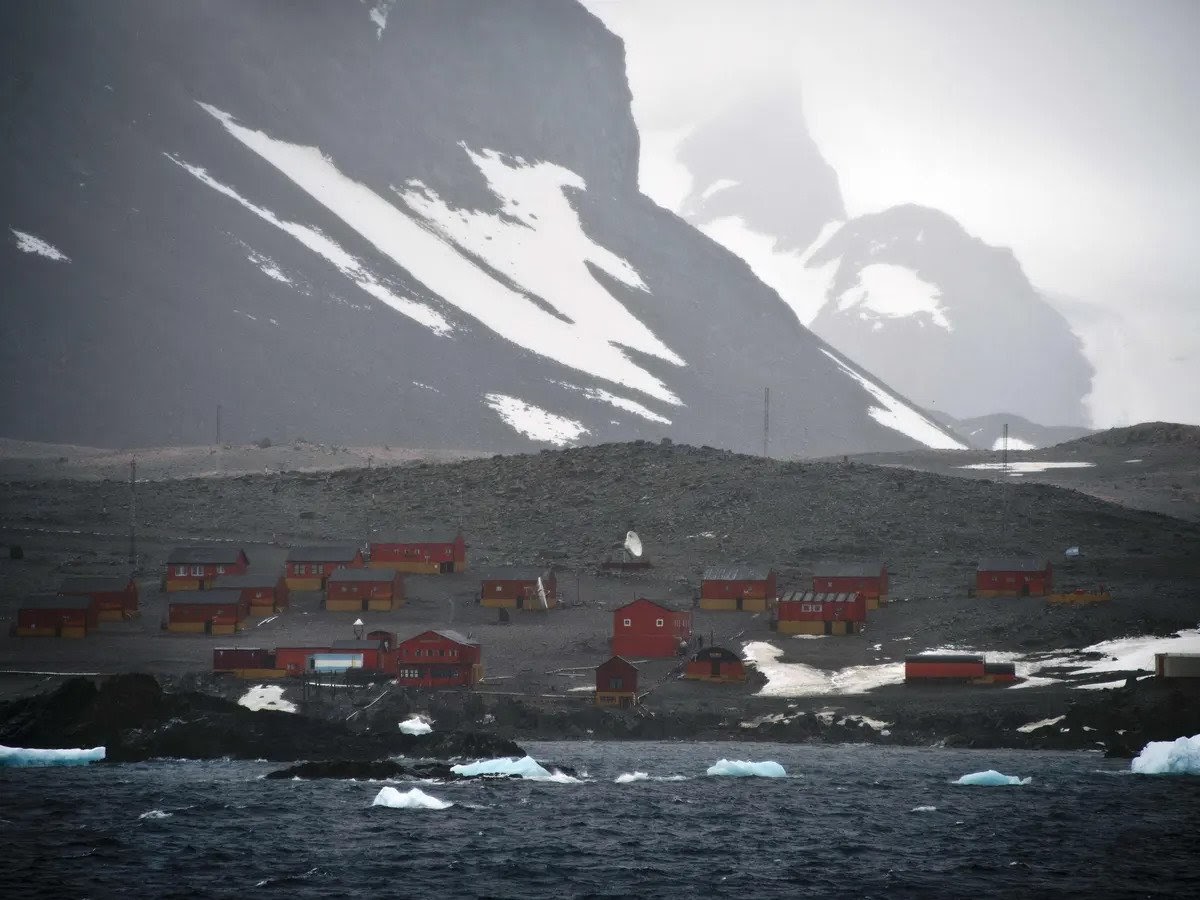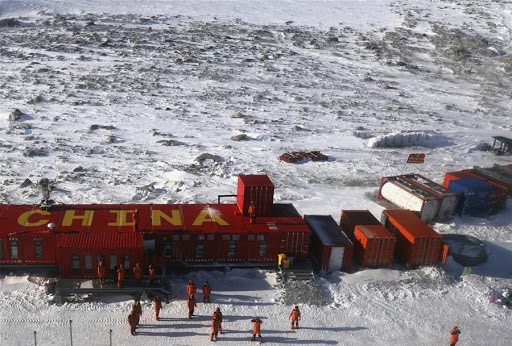The growing cloud of China in Antarctica
Despite warnings from scientists that climate change and human activity around Antarctica will disrupt the region's ecosystem, countries have been slow to take action to extend protections in the area. On October 30, a coalition of countries failed — for the ninth time — to approve three proposed "marine protected area" designations in Antarctica, owing largely to China's reluctance.

Last month, 25 countries and the European Union, all members of the Commission for the Conservation of Antarctic Marine Living Resources (CCAMLR), debated, for the ninth time, the implementation of three vast marine protected areas (MPA) in waters around Antarctica: the Weddell Sea, the East Antarctic, and the Antarctic Peninsula.
And for the ninth time, official as of last Friday, the CCAMLR declined to approve the proposal. Russia and China appear to have been the reason — once again — for the failure. (Although in a New York Times op-ed from October 26, former U.S. Secretary of State John Kerry said China was the lone CCAMLR member that had yet to assure its support for the three new MPAs.)
The MPA designations could have protected more than 3.2 million square kilometers of the Antarctic (Southern) Ocean, where penguins, orcas, and humpback whales live, and safeguarded the long-term survival of krill, the tiny crustacean that provides basic nourishment for larger species.
Now we wait to see whether there will be any fallout against Beijing, especially in light of China’s recent highly publicized promise to “achieve carbon neutrality before 2060.” How will the country boost its environmental credentials in preparation for the Convention on Biological Diversity, to be held in Kunming, Yunnan Province next May?
Antarctica as international territory
Until two centuries ago, the South Pole was literally Terra Australis Incognita. The 200th anniversary of the first time a human being spotted the white continent was only last January. There were originally seven countries which claimed sections of Antarctica (Argentina, Australia, Chile, France, New Zealand, Norway, and Britain), and between 1957 and 1958, 12 countries actively carried out research on the continent.
Signed in 1959 by 13 countries (the seven initial claimers, plus Belgium, Japan, Poland, Russia, South Africa, and the United States), the Antarctic Treaty System (ATS), with its secretariat located in Argentina, has been able to maintain stable relations among its members, fostering collaboration in scientific research, and above all keeping major conflicts at bay. Indeed, Antarctica has been a peaceful land. Although there have been isolated crimes, the continent has been spared of large-scale violence. The only time shots have ever been fired in Antarctica was in 1952, when staff at an Argentine base shot a machine gun over a British team at Hope Bay, in relation to sovereignty disputes (Argentina, Chile, and the United Kingdom have overlapping territorial claims in the continent).
Three decades after the creation of the ATS, the Protocol on Environmental Protection was signed in Madrid in 1991, designating Antarctica as a “natural reserve, devoted to peace and science.” Before 2048 — except if it is modified by unanimous agreement of all Consultative Parties — the protocol forbids all actions related to the extraction of Antarctic mineral resources, except for scientific research.
Today, the ATS has 54 parties — 29 of those are consultative (with a vote) — and even though China just joined in 1983, its level of investment and activities in Antarctica has placed Beijing in the South Pole limelight.
China’s role in the South Pole
China’s first research permanent station, Great Wall, was built in 1985, the same year that the country obtained a consultative status to vote at the ATS. From that point onward, Beijing has constructed a permanent airfield, two seasonal stations (Kunlun and Taishan), and another permanent station (Zhongshan). Now China has two ice breakers, with plans for a nuclear-powered one, and a fifth research installation planned to be opened in 2022 at Inexpressible Island on the Ross Sea ice shelf.

Among all this activity, there are contentious issues arising from China’s interest in the South Pole. Kunlun station is strategically positioned in an area known as Dome Argus, a site recognized as the best location for space observation on Earth, thanks to its high elevation and outstanding visibility. Since 2013, China has pushed a proposal to establish an “Antarctic Specially Managed Area” (ASMA) around the Kunlun post, in what has proven to be controversial, especially for Australia: the area in question is within Canberra’s territorial claim, and the Australian government was against the Chinese proposal.
According to Dr. Nengye Liu, Director of the Centre for Environmental Law at Macquarie University in Australia, “establishing an ASMA around the Kunlun station would essentially give China a greater say in the activities conducted in the area. China is a consultative party to the 1959 Antarctic Treaty and the creation of an ASMA around Kunlun would serve as a symbolic achievement to showcase China’s influence in the ATS.”
There are also concerns over the lack of preparedness of the Antarctic Treaty to confront today’s geopolitical context. In a recent op-ed for The Australian (paywall), Dr. Elizabeth Buchanan, a lecturer of Strategic Studies with Deakin University at the Australian War College, warned that “[w]e know well the tendency of signatories such as China, Russia, and even the US to interpret international law in rather creative ways, just look at the South China Sea. And signatories are well versed with the grey zone of the Antarctic Treaty. The treaty bans militarization on the continent, yet military personnel and equipment are deemed permissible if deployed in ‘support of scientific research.’”
She also pointed out that technology for scientific research could eventually be applied for military purposes. “China has deployed its Ice Pathfinder satellite which has now mapped the Antarctic down to 70m visibility. Beijing has eyes on the entire continent, and we are yet to access the satellite’s “scientific” findings — despite the treaty stipulating all research data is to be shared.”
Another issue is the mineral wealth of the continent: there are estimates that Antarctica contains 500 billion tons of oil, between 300 and 500 billion tons of natural gas, and possibly 135 billion tons of oil in the surrounding waters. Even with the environmental protocol in place, Anne-Marie Brady, author of “China as a Polar Great Power,” says that scientific research into Antarctic minerals is still allowed. More importantly, Brady indicates that “from the Chinese government’s point of view, the [Environmental] Protocol simply postponed what Chinese polar policymakers believe is the inevitable opening up of Antarctic resources.”
A source of geopolitical tension
Antarctica is far away from continental China, so to support its activities it needs partners in the area. One of them is Australia, but the evolution of ties between Beijing and Canberra in recent years shows how fast a successful bilateral relation can deeply deteriorate. Ever since a visit by Xí Jìnpíng 习近平 to Tasmania in 2014, its capital Hobart became a key gateway for Chinese ships heading to Antarctica. But this partnership suffered a profound degradation after the government of Scott Morrison called for an independent review of the origins of the COVID-19 pandemic; China retaliated with measures that affected Australian exports to China, such as barley and coal.
New Zealand, with Christchurch as another important gateway port for operations in Antarctica, has kept in better terms with Beijing, but in the last couple of years there have been more concerns over frictions between the two countries, due to New Zealand’s views on the treatment of Uyghurs in Xinjiang and its concern about the actions of Chinese diplomats in relation to pro-Hong Kong protests in Auckland.
If China’s relations with its Australian and New Zealand partners continues to deteriorate, perhaps we will see a strong turn in Beijing’s attention to Ushuaia in Argentina and Punta Arenas in Chile — both cities with ports much closer to Antarctica than those in Australasia — to continue the support of Chinese operations in the South Pole.
Even though China has no sovereignty claims in Antarctica, Beijing aspires to have an important role to play globally. The Antarctic Treaty is set to be reviewed on 2048, just a year before a political milestone for the Chinese regime: the centenary of the foundation of the People’s Republic of China. And according to Xi Jinping, by then, his country will have become “a global leader in terms of comprehensive national power and international influence.”
